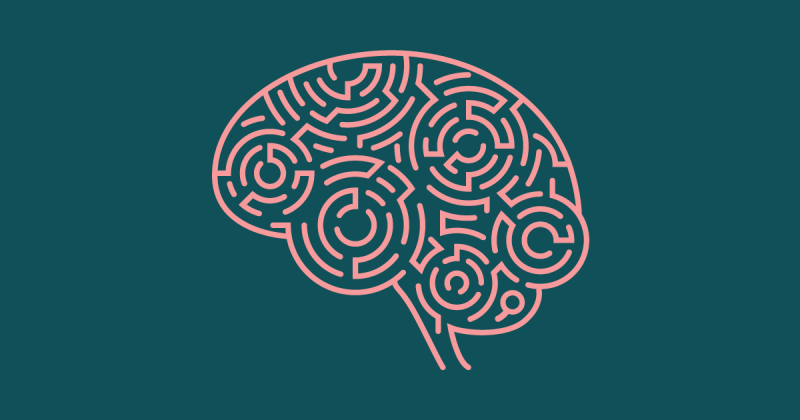Updated 27/04/2023
The signs and symptoms of seizures can either be easily seen or difficult to detect. Some people associate seizures with a loss of consciousness and jerking movements. While they can be present, these symptoms are not a part of all types of seizures.
Becoming familiar with the various seizure signs will help you better understand what is happening to you or a loved one. Let’s take a deeper look at the different types of seizures and seizure warning signs.
What are focal onset seizures?
A focal onset seizure (previously called partial seizures) is characterized by abnormal electrical activity in only one part of the brain. A focal seizure may or may not cause a loss of awareness or consciousness.
What are the symptoms of focal seizures?
Focal seizures affect specific regions of the brain which can lead to a variety of symptoms that usually last no more than two (2) minutes. It may not be clear to an outside observer that you’re having a focal seizure and, in fact, it’s possible that you might not even be aware of it yourself. Focal seizure symptoms include:
-
Confusion
-
Staring into space
-
Odd feelings/sensations – Feelings of déjà vu, sudden mood changes, tingling sensations, or even unusual perceptions or hallucinations in the form of sights, sounds, and smells.
-
Freezing– Some people freeze entirely during the seizure and are unable to communicate or respond.
-
Automatisms – Repetitive actions that normally wouldn’t happen such as swallowing, chewing or walking in circles.
Can the symptoms of focal seizures be caused by other issues?
Yes. Observing what appears to be a focal seizure sometimes doesn’t provide enough information for a diagnosis. Similar symptoms can be seen or experienced with other neurological disorders, cardiac conditions, some mental health conditions, or can even be caused by migraines. For this reason, it’s important to seek out an accurate diagnosis.

[Image description: At doctor’s appointment, physician shows to patient the shape of brain with focus on hand with organ. Scene explaining patient causes and localization of diseases of brain, nerves and nervous system.]
What are generalized onset seizures and their symptoms?
Unlike focal seizures, which happen in just one part of the brain, generalized onset seizures occur in both sides of the brain. Some seizures can start as a focal seizure and then expand into a generalized seizure.
There are six (6) main types of generalized seizures we will cover here, each with varying signs and symptoms. Most, but not all, will involve a loss of muscle control in the form of twitching, jerking, or stiffening in various parts of the body. Here is a quick overview of the types of generalized onset seizures and their signs and symptoms.
Atonic seizures
Are also called drop seizures because they will cause a sudden fall due to a loss of muscle control. This type of seizure is often called a “drop attack” or “falling down” seizure.
Tonic seizures
These seizures may also cause a fall but are marked by muscle stiffening in the arms and legs as well as back.
Clonic seizures
Clonic seizures will cause repetitive jerking movements, mostly centred around the arms, neck, and face.
Tonic-clonic seizures (previously called grand mal seizures)
These seizures are the most severe seizures, causing complete loss of consciousness along with full-body shaking. These are the seizures most commonly known by the general public due to their dramatic use in films and television. They may result in loss of bladder control or biting of the tongue.
Absence seizures
Absence seizures tend to come with less obvious symptoms. Symptoms of an absence seizure include staring off or zoning out and slight muscle twitching.
Myoclonic seizures
These seizures also cause jerking or twitching, mainly around the arms and legs or upper body.

[Image description: Image of a cartoon brain outline filled with a maze.]
What are unknown onset seizures?
As the name suggests, unknown onset seizures are seizures where the start of the episode is not known. With a diagnosis, the seizure may eventually be classified as a focal onset seizure or a generalized onset seizure.
Unknown onset means the seizure cannot be diagnosed as either focal or generalized and may mean the classification is temporary until more information about the seizures comes to hand over time or with more testing involved.
How long can a seizure last?
Some seizures may last for just a few seconds, while others can continue for several minutes. It’s important to understand the different types of seizures and their duration so that you can recognize the early signs of a seizure disorder.
Partial seizures, for example, may only last for a few seconds or minutes and may only affect one part of the body, such as the arms or legs. These seizures are often accompanied by symptoms such as tingling, twitching, or a sense of déjà vu. On the other hand, generalized onset seizures may involve the entire body and can last for several minutes. These seizures often involve a loss of consciousness, convulsions, or violent muscle contractions.
Recognising the early signs of a seizure disorder is crucial, as it can lead to timely medical intervention and prevent further complications. If you or a loved one experience any symptoms that may indicate a seizure, it’s essential to seek medical attention right away.
When should emergency aid be called?
Most seizures are short and end in under two (2) minutes and do not require emergency medical attention. However, there are times when emergency aid should be called.
With convulsive seizures, call for help if:
-
It is a person’s first seizure
-
The convulsions last longer than five (5) minutes
-
The convulsions start and stop repetitively for 30 minutes or more
- The person is not responsive for more than five (5) minutes after the seizure ends
With seizures that are not as visible, such as with absence seizures, call for help if
-
The seizures last longer than usual
Other reasons for calling for emergency help for seizures include
- Fever
- Pregnancy
- Additional medical issues such as diabetes
- Injuries sustained during the seizure
- Seizure occurs in water
- They may have inhaled food, fluid or vomit
- If the person has a known cardiac condition
Looking to find the cause of your seizures?
If you or a loved one has experienced a seizure, we can help. Contact us today to find out more about our at-home diagnostic and monitoring services.
